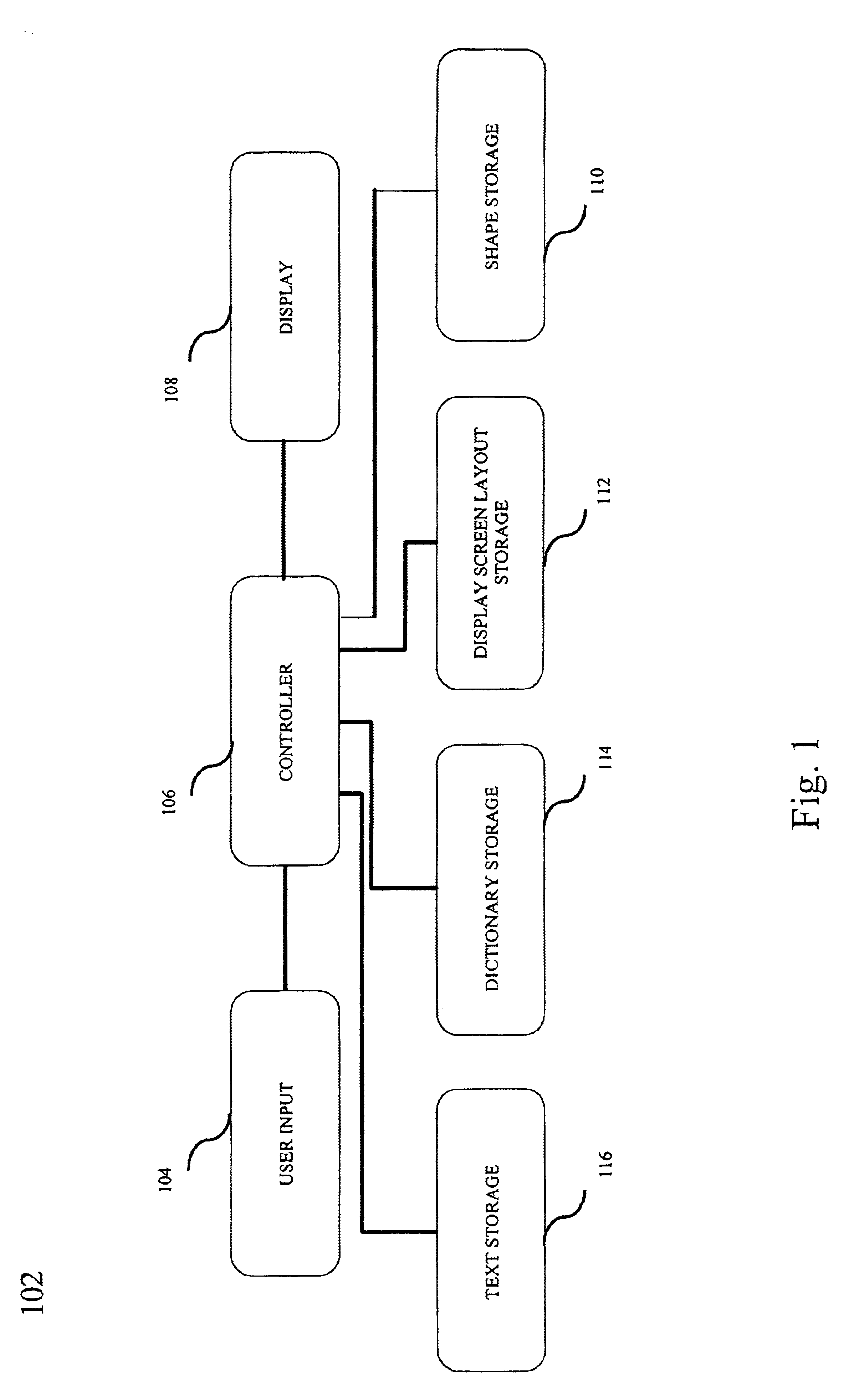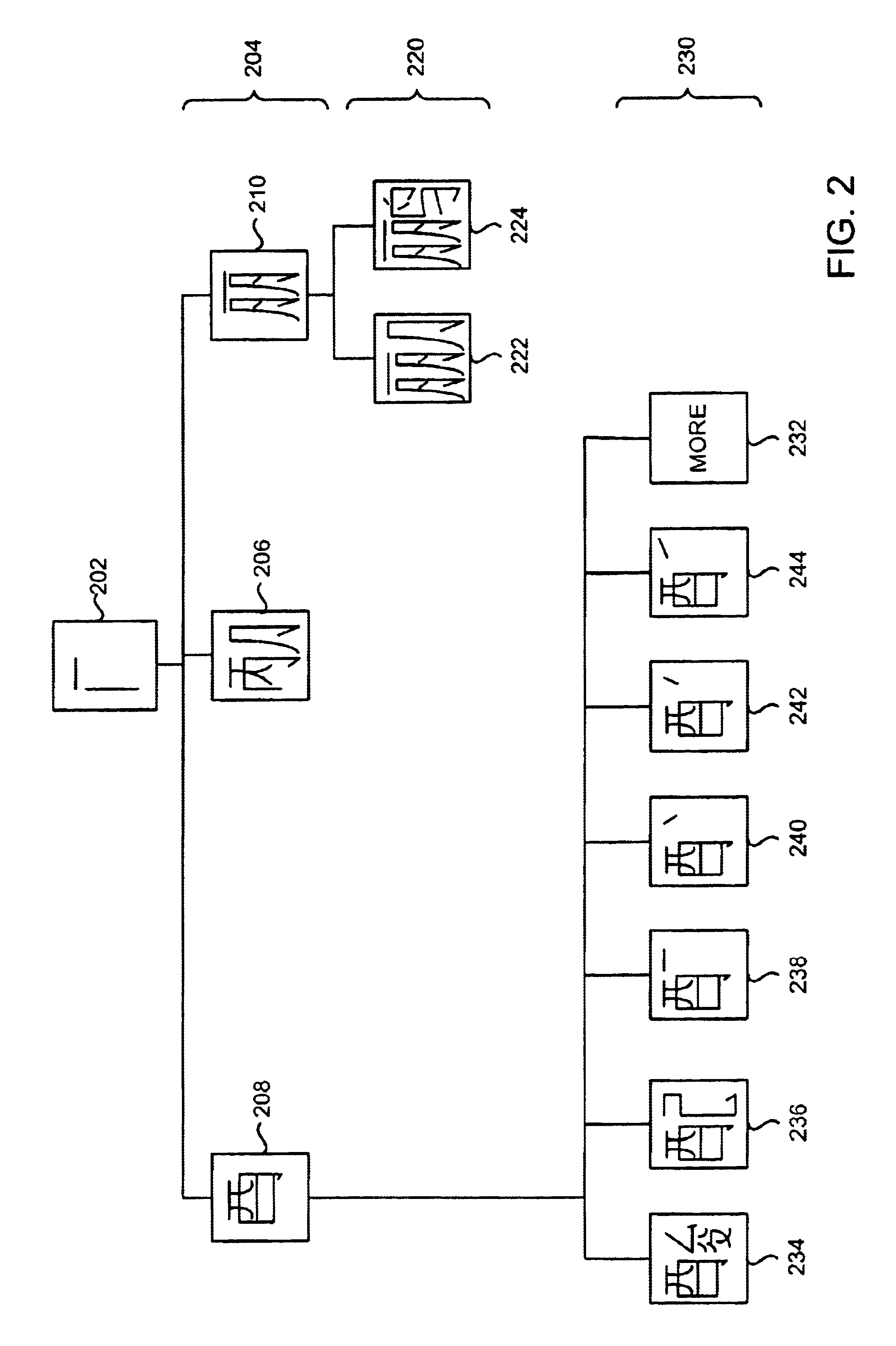Database engines for processing ideographic characters and methods therefor
a database engine and character technology, applied in the field of computerimplemented systems and techniques for inputting and encoding characters, can solve problems such as inability to use the keyboard in a linear fashion, the proportion of the keyboard, and the difficulty of identifying the character
- Summary
- Abstract
- Description
- Claims
- Application Information
AI Technical Summary
Benefits of technology
Problems solved by technology
Method used
Image
Examples
Embodiment Construction
[0027]The present invention will now be described in detail with reference to a few preferred embodiments thereof as illustrated in the accompanying drawings. In the following description, numerous specific details are set forth in order to provide a thorough understanding of the present invention. It will be apparent, however, to one skilled in the art, that the present invention may be practiced without some or all of these specific details. In other instances, well known process steps and / or structures have not been described in detail in order to not unnecessarily obscure the present invention.
[0028]In accordance with one aspect of the present invention, there are provided inventive techniques for inputting and encoding ideographic characters in a manner that is both efficient and natural to users. In one embodiment, initial handwritten input strokes are obtained from the user via a touch-sensitive input apparatus and subsequently categorized (i.e., classified or characterized) ...
PUM
 Login to View More
Login to View More Abstract
Description
Claims
Application Information
 Login to View More
Login to View More - R&D
- Intellectual Property
- Life Sciences
- Materials
- Tech Scout
- Unparalleled Data Quality
- Higher Quality Content
- 60% Fewer Hallucinations
Browse by: Latest US Patents, China's latest patents, Technical Efficacy Thesaurus, Application Domain, Technology Topic, Popular Technical Reports.
© 2025 PatSnap. All rights reserved.Legal|Privacy policy|Modern Slavery Act Transparency Statement|Sitemap|About US| Contact US: help@patsnap.com



